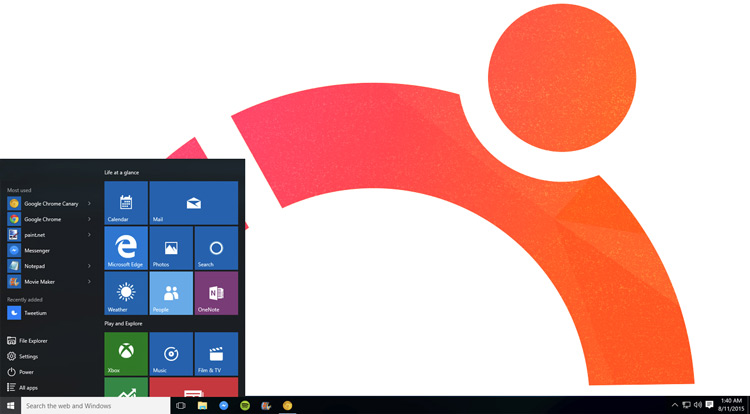- May 10, 2019
- 2,289
Downloaded Windows 10 iso but the iso file size is 5 GB and blank DVDs available is 4.7 GB. Is there a way to burn the iso image to USB drive to work with secure boot. The iso image is on Ubuntu and need to install Windows on my PC.

Will try the tool after some hours. Need to sleep now. Will the bootable USB drive work with Secure Boot? Last time I used Rufus and it did not work with secure boot (had to disable secure boot to install Windows)
How to Create a Bootable Windows 10 USB on Ubuntu - OMG! Ubuntu
Use WoeUSB to create a bootable Windows 10 USB on Ubuntu and other Linux distros. This free USB writing tool is easy to install and easy to use.www.omgubuntu.co.uk
I have used Brave for online banking and the Shields didn't cause any issues; my settings and extensions are mostly as recommended by a certain very helpful person on MT.I don't do online banking which I should have stated, but their Shields UI is so user-friendly I can't see why it would be an issue. Remember, their mission with Shields is to keep the web usable, e.g. you may report a broken site right from that same UI when you drop Shields.The couple of times I've needed to drop Shields I had Privacy Possum or ClearURLs to handle anti-tracking.
That was true in the past, but UEFI secure boot should not be a problem nowadays.Will try the tool after some hours. Need to sleep now. Will the bootable USB drive work with Secure Boot? Last time I used Rufus and it did not work with secure boot (had to disable secure boot to install Windows)

 www.windowscentral.com
www.windowscentral.com
Always use the windows media creation tool for Windows.That was true in the past, but UEFI secure boot should not be a problem nowadays.

How to install Windows 10 from USB with UEFI support
These tools help create a compatible USB flash drive and install Windows 10 on a UEFI-based PC.www.windowscentral.com
If you create bootable usb by formating it in FAT32 by Rufus then it would work with secure boot enabled but if you format it in NTFS then it would require you to disable secure boot before installation. This is a known issue of Rufus because it uses a bootloader which is open source and safe but Microsoft only trust their own bootloader that's why the term "secure boot" is used. Even though Rufus is faster than anything out there and you can manually enable secure boot later but still I don't recommenced Rufus to anyone anymore because of this extra hassle. There's no need to format your usb drive to FAT32 or disable secure boot only for Rufus. You can try other alternative tools. Microsoft has their own tool for this. It hasn't been updated in 11 years, maybe because it doesn't require any updates. It works perfectly fine for any system Legacy or UEFIWill try the tool after some hours. Need to sleep now. Will the bootable USB drive work with Secure Boot? Last time I used Rufus and it did not work with secure boot (had to disable secure boot to install Windows)
Sounds like this is the way to go. But you need a Windows system to run it.Always use the windows media creation tool for Windows.

 itsfoss.com
itsfoss.com
I am curious why you're running linux in VM instead of dual boot.
If you are already experimenting, don't forget to try MX Linux.Still trying out various distros to see which one I like. VMs make it super easy without affecting the system until I come to a decision. After that I'll do a dual boot setup.
You have version 19.1, or you continue with version 18.If you are already experimenting, don't forget to try MX Linux.
I switched over to 19.1. They worked out a lot of the issues, I am pretty happy with it. The new Xfce desktop on MX19 does use a little more RAM than the older version, but that is the price of progress. The increase in RAM usage has been noted also by users of other distros with Xfce. Currently, KDE uses slightly less RAM than the new Xfce. But who cares.You have version 19.1, or you continue with version 18.
I'll definitely give it a look!If you are already experimenting, don't forget to try MX Linux.
I have the ISO prepared, but I am using more Debian, if I have time and I install it.I switched over to 19.1. They worked out a lot of the issues, I am pretty happy with it. The new Xfce desktop on MX19 does use a little more RAM than the older version, but that is the price of progress. The increase in RAM usage has been noted also by users of other distros with Xfce. Currently, KDE uses slightly less RAM than the new Xfce. But who cares.

Could you please try Intel's ClearLinux? I tried to install it, but I always have issues with my network adapter and GPU...Hello from Elementary OS! I started to worry as I am becoming addicted to testing Linux distros. Anyway, I am enjoying Elementary OS the most. It is the more Windows-like distro. One drawback is the absence of "minimise button" in system apps. You need to right click the bar and then choose minimise. I think they are trying to force users to use their multitasking option. Firefox and Libreoffice are not installed by default and the Software store is different from Ubuntu's snap store and offers very limited apps. Anyway, it is very easy to install snap store and I did it needs a system restart to appear into your apps. I installed Firefox and Libreoffice from Ubuntu Archive Repository. Everything is working as intended.
View attachment 235051